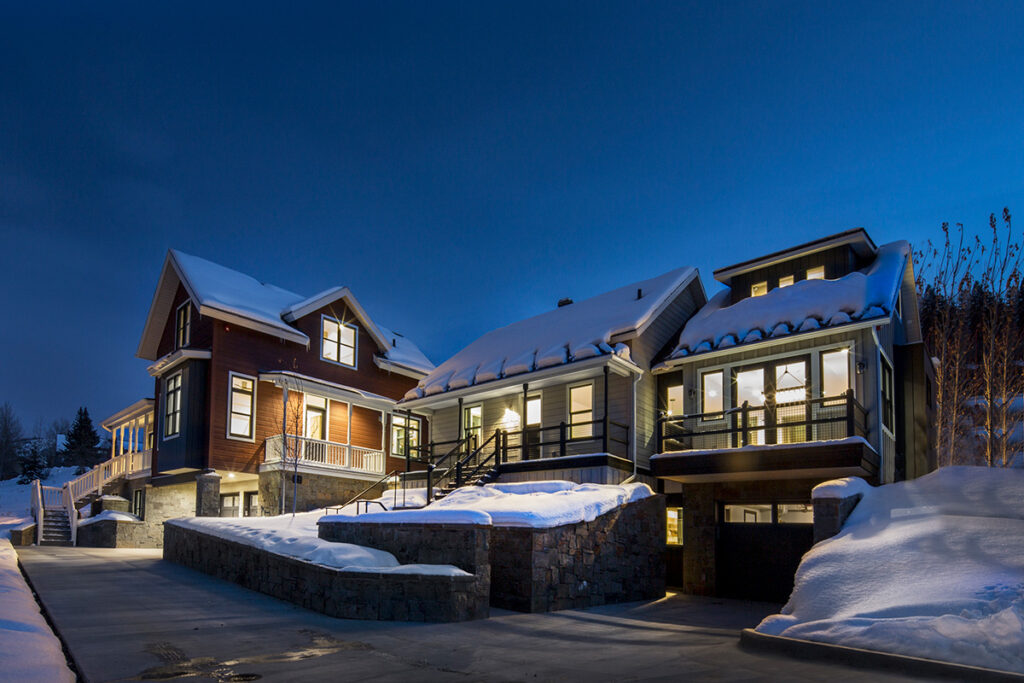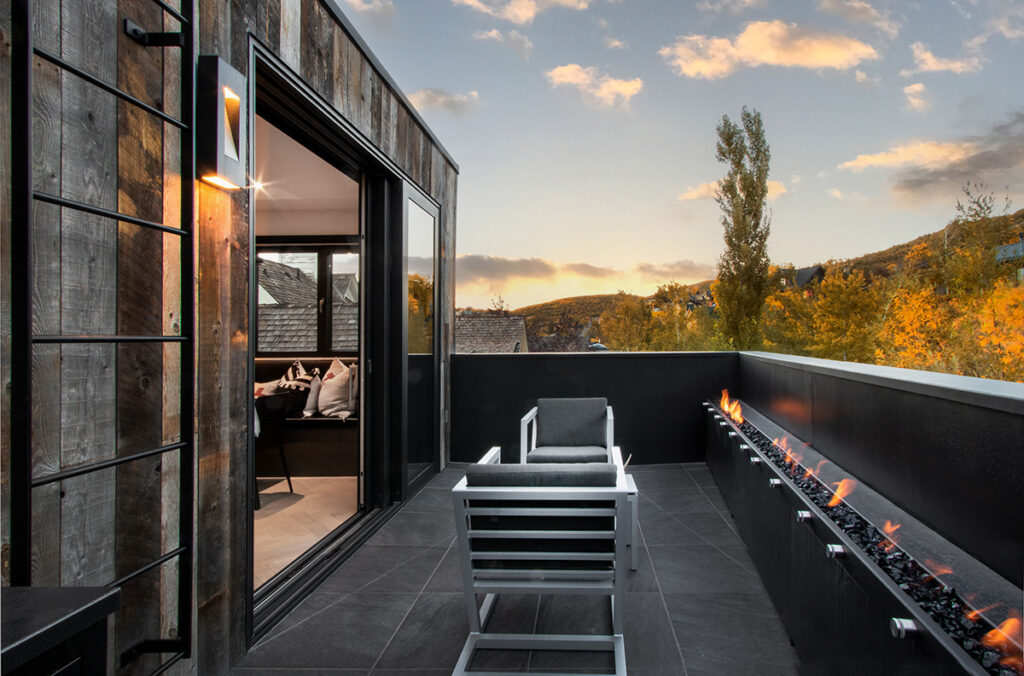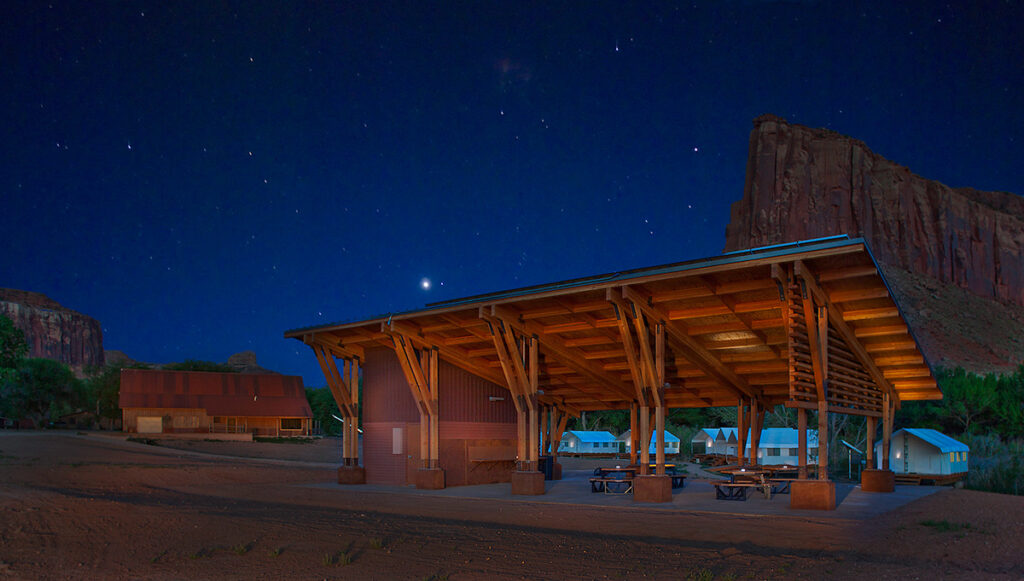Increasingly, dark sky ordinances and the commitment to dark skies by designers, builders and homeowners are reducing the glare and harmful effects of light pollution.
“All the lights on,” I say when preparing for night shots. To me evening and night shots are the best way to capture the profile of the structure, clearly see the window design, and to appreciate the building materials in even light. Opening shot: Colony home, JOC Construction, Park City.

Park City. Architect: Elliott Work Group. Build: Aerie Construction.
In the last few years, I have seen big changes in outdoor lighting. Ten years ago, I commonly saw whole-house lighting from yard fixtures; up lighting on bricks and landscape trees; spotlights; spill-over lighting from porches, entries, and patios; and very bright unshielded bulbs. On occasions I struggled with exposures because of glare and uneven brightness.

Old Town Park City. Architect: Jonathan DeGray
Awareness of the need to preserve dark skies began in the 1960s as much of the world was rapidly losing sight of constellations. Now, light pollution blocks views to the Milky Way for 80 percent of Americans. Other problems have been identified. The US Fish & Wildlife points out that nearly half of earth’s species are nocturnal and absence of light is key to their habitat needs and well-being, and unnatural patterns of light and dark affect navigating, nesting, mating, and hiding from predators. Artificial lighting accounts for migrating birds becoming disoriented by city lights and towers where they wander off course and collide into glass and buildings. Also, hatching turtles seek the brightest light and wander inland instead of heading to the sparkling waves. Humans, too, suffer health effects in the form of disrupted circadian cycles.

Old Town Park City. Architect: Jonathan DeGray
In Utah, there is strong awareness and leadership on this issue. The University of Utah established the Consortium of Dark Sky Studies, which offers and undergraduate minor in dark sky study, reportedly the first in the country. In the Wasatch Back, Park City took an early lead in adopting a dark sky ordinance, and Summit County and Wasatch County are following. I am seeing more compliant designs in the Wasatch Front, as well.
The components of light pollution are glare, meaning excessive brightness; skyglow, which is the brightening of the night sky over inhabited areas; and light trespass, meaning light that falls where it is not needed or intended. Ordinances basically call for eliminating glare and light trespass and they reference fixtures and installation.

Alta. Architect: Think Architecture; Interior: K. Rocke Design
Consequently, flood lights must be shielded, wall packs and bollards are appropriately directed, and there are no drop or sag lenses, drop-lens canopy lights, or unshielded decorative lights.

Salt Lake City. Architect: Renovation Design Group.

Park City. Architect: Otto Walker Architects. Build: Craig Construction
The International Dark Sky Association has designated 21 dark sky places in Utah, including eight state parks and the national parks. This is significant, because they have designated only 90 places in the world, and 21 are in Utah!
I will leave you with this inspiration to go out and enjoy Utah’s wonderful dark skies.

This is the scientific research station at Redd Ranch not too far outside Canyonlands National Park. Architect: CRSA, Salt Lake City





















